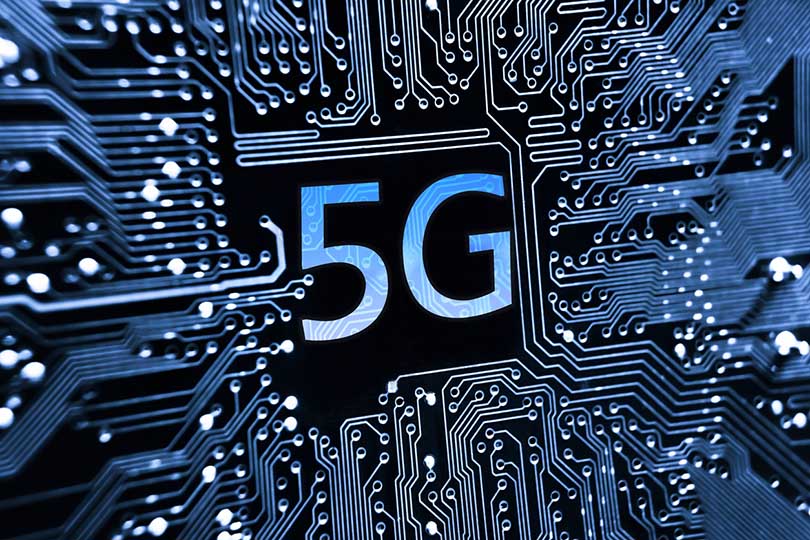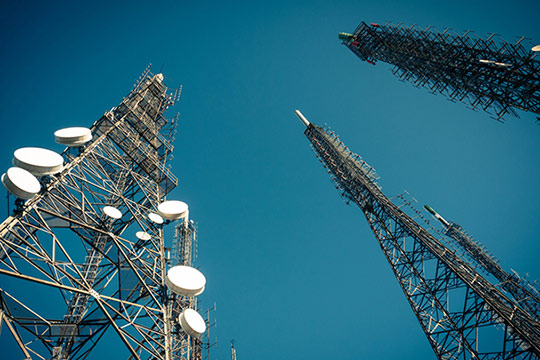TECHNOLOGY FOCUS
The standardization of 5G New Radio (NR) was complete in 2018 and standard compliant deployments are expected early 2020. NR will provide new services like Enhanced Mobile Broadband, Massive Machine Type Communications and Ultra-Reliable and Low Latency Communications.
New extreme requirements include peak data rates of up to 20 Gbps in downlink / 10 Gbps in uplink and latencies as low as 0.125 ms.
Based on the explanation of the shortcomings of LTE, the physical layer principles of 5G will be introduced. Among others, this includes discussion about the waveform, access scheme, duplex mode, frame structure, coding and modulation. Advanced MIMO schemes, with the use of extensive beam forming, are one essential component for 5G and are explained in detail. This will also result in different design of the various signals, channels and procedures in up- and downlink.
The training will introduce how to cell search, synchronization and broadcast signalling is done as well as random access. Based on its attendance in 3GPP, the trainer will also provide the latest update of 5G standardisation in 3GPP.


COURSE CONTENT
This training will first discuss 5G requirements, deployment scenarios and spectrum assumptions. Based on the explanation of the shortcomings of LTE, the physical layer principles of 5G will be introduced. Among others, this includes discussion about the waveform, access scheme, duplex mode, frame structure, coding and modulation.
Advanced MIMO schemes, with the use of extensive beam forming, are one essential component for 5G and are explained in detail. This will also result in different design of the various signals and procedures in up- and downlink.
The training will introduce how to cell search, synchronization and broadcast signalling is done as well as random access. Resource assignments are done quite differently to ensure ultra-low latency as well as forward compatibility with future phases of 5G.
Based on its attendance in 3GPP, the trainer will also provide the latest update of 5G standardisation in 3GPP.
Combine this course with course No 042 "5G Radio Protocol and Architecture" for the best learning effect. Please note that participants attending both course No 041 and course No 042 will benefit from a reduced total course fee. Book the Bundle course.
WHO SHOULD ATTEND
The course is suitable for engineers that already work 2G/3G or 4G systems and are interested in future evolution towards 5G.
The course is held by a technical expert in the field that is directly involved in 3GPP standardization and provides a hands on up to date background information of the latest trends in this industry. Therefore, it is suitable for all kind of engineers from research, development, planning, deployment, regulation and operation as well as executives, managers and system architects.
Pre-existing knowledge of LTE technology is required for a full understanding of the technical details of 5G NR.

Due to Covid-19, and the uncertain travel recommendations for Autumn 2020, it is decided that this course is planned to run Online only. The daily schedule will be adjusted to fit remote training, with less hours per day divided into extra days. Make a preliminary booking and we will keep you updated.
Day 1
Introduction to 5G
- Overview 3GPP Systems, Motivation, Industry Groups
- ITU-, NGMN-, 5G-PPP, 3GPP- View and Timeline
- 5G Scenarios and Use Cases
- Requirements and Technologies for eMBB, URLLC and mMTC
- Pre-standard Activities and Special Interest Groups (e.g. Verizon, KT)
5G Spectrum
- 5G Spectrum (<6GHz, mm- cm-Wave) and Channel Characteristics
- 5G Bands defined in 3GPP and US Spectrum Allocations
- LTE and 5G Technologies for Unlicensed Spectrum
- Licensed Assisted Access and Aggregation with WLAN/WiFi
- Shared Spectrum and Licensed Shared Access
5G Radio Access – OFDMA/ DFT-S-FDMA
- OFDM Signal Generation and OFDM Multiple Access
- Peak-to-Average Power Problem and Uplink DFT-S-FDMA
- Resource Allocation and Scheduling Techniques
MIMO / Beam Forming Fundamentals
- MIMO gains, SU-MIMO and MU-MIMO Schemes
- Digital, Analog and Hybrid Beamforming
- 5G Antenna Configurations and Dimensioning
- Beam Forming and Massive MIMO (Full Dimension MIMO)
- Beam Sweeping, Beam Selection and Beam Management
Day 2
5G Physical Layer Design and Physical layer Processing
- Duplexing Schemes, Dynamic TDD and Flexible Slot Formats
- Flexible OFDM Numerology and Flexible Subframe Structure
- Slot Structures (incl. Mini-Slots) and Self-Contained Transmission
- Multiplexing Options for URLLC in eMBB Resource Allocations
Physical Layer Processing Chain
- Overview Processing Chain
- CRC Check, Coding and Interleaving
- Modulation Schemes
Radio Frequency Aspects
- UE/gNB Transmit Power and Channel Arrangements
- Scalable Bandwidth Parts for UE Operation
- 5G Frequency Bands and Relation to Numerologies
NR Deployment Options
- LTE and NR Carrier Aggregation
- Dual Connectivity and Split of Functionality
- Uplink Sharing and Supplementary Uplink
- LTE-NR Downlink Coexistence
Downlink Physical Signals
- Downlink Synchronization Blocks and Cell Search
- Beam Sweeping using Synchronization Signal Bursts
- Demodulation-, Phase Tracking- and Channel State Information Reference Symbols
Day 3
Downlink Physical Channels
- Physical Broadcast and Physical Shared Channel and Resource Mapping
- Paging and Broadcast via Downlink Shared Channel
- Physical Downlink Control Channel and Control Resource Sets
Uplink Physical Signals and Channels
- Demodulation-, Phase Tracking- and Sounding Reference Symbols
- Random Access Channel (Preamble Structures and Procedures)
- Beam Sweeping and RACH Beam Association
- Uplink Time Synchronisation, Mini-slots and Bi-directional Uplink Slot
- Short and Long Uplink Control Channel
- Mapping and Multiplexing Options of Uplink Control Information
- Grant-free Uplink Transmission
UE Capabilities
- NR Chipsets and UE Capability Exchange
- Peak Data Rates and UE Categories for eMBB UEs
- Key Features for Ultra Reliable and for Low Latency UEs
- Spectrum Efficiency Enhancements compared to LTE
5G Phase 2 Standardization
- Non-Orthogonal Multiple Access
- 5G Satellite Components and Integration
- Mobility Enhancements and Future 5G V2X
- 5G Operation in Unlicensed Bands
- Integrated Access and Backhaul
Said about the course from previous participants:
"The lecture style was perfect, handouts has very high quality, very skilled and experienced lecturer."
"Good overview over all aspects of LTE: architecture, technologies used, channels, layers."
"Diversity of discussions issues were very good, as well as the organization of the course and the time frame."
See interesting links to white papers co-authored by Mr Eiko Seidel, related to the course content: 5G Radio Access Technology
http://www.nomor.de/home/technology/3gpp-newsletter/2017-08:-5g-frame-structure
http://www.nomor.de/home/technology/white-papers/dynamic-tdd
http://www.nomor.de/home/technology/white-papers/dense-5g-networks
http://www.nomor.de/home/technology/3gpp-newsletter/2017-03%3A-3gpp-5g-ran-study-completed
http://www.nomor.de/home/technology/3gpp-newsletter/2017-01:-3gpp-5g-ran-adhoc-ran-functional-split

